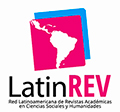Chaplin e a tradução intersemiótica: uma reflexão sobre “Em Busca do Ouro”
DOI:
https://doi.org/10.11606/issn.2317-9511.v31i0p164-186Keywords:
Charles Chaplin, The Gold Rush, Translation, Intersemiotic translationAbstract
In this paper, we discuss the two versions of Charles Chaplin's The Gold Rush, the first, from 1925, with the characteristics of silent cinema, especially the absence of speech, and the second, from 1942, with the addition of speeches (by Chaplin), sound effects, music and changes in the film editing. The discussion is made from the concept of Intersemiotic Translation, proposed by Jakobson (1959) and developed by Plaza (2010). Also theories related to the cinema and more specifically to the work of Chaplin are addressed. In this paper we think about the possibility of the existence of a new function carried out by Chaplin: translator. The speech, which presents significant affinities with the practice of translation, is emphasized among the modifications.
Downloads
Downloads
Published
Issue
Section
License
Copyright (c) 2021 Diogo Rossi Ambiel Facini

This work is licensed under a Creative Commons Attribution-NonCommercial-ShareAlike 4.0 International License.
Autores que publicam nesta revista concordam com os seguintes termos:
- Autores mantém os direitos autorais e concedem à revista o direito de primeira publicação, com o trabalho simultaneamente licenciado sob a Licença Creative Commons Attribution BY-NC-SA que permite o compartilhamento do trabalho com reconhecimento da autoria e publicação inicial nesta revista.
- Autores têm autorização para assumir contratos adicionais separadamente, para distribuição não-exclusiva da versão do trabalho publicada nesta revista (ex.: publicar em repositório institucional ou como capítulo de livro), com reconhecimento de autoria e publicação inicial nesta revista.
- Autores têm permissão e são estimulados a publicar e distribuir seu trabalho online (ex.: em repositórios institucionais ou na sua página pessoal) a qualquer ponto antes ou durante o processo editorial, já que isso pode gerar alterações produtivas, bem como aumentar o impacto e a citação do trabalho publicado (Veja O Efeito do Acesso Livre).







